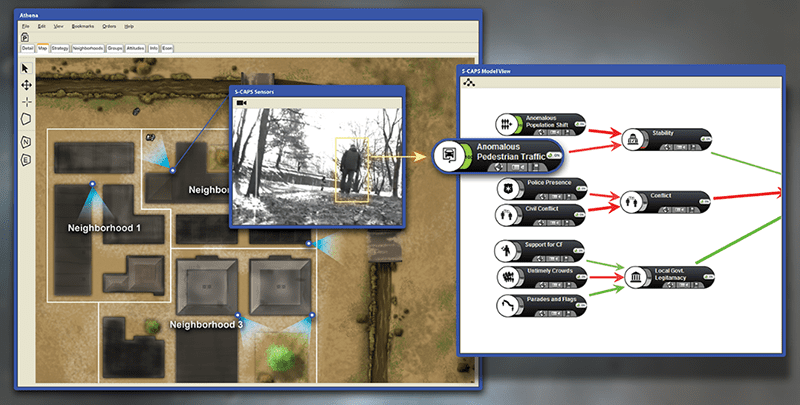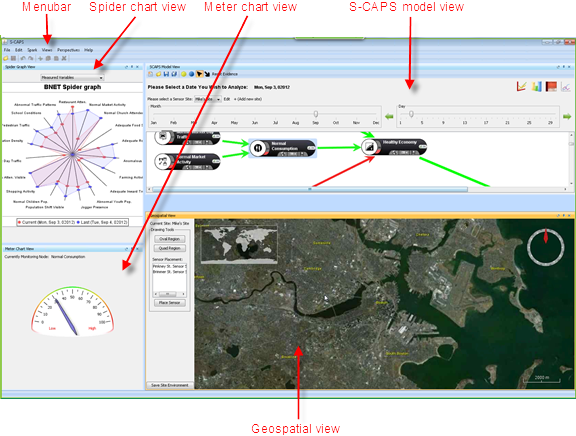The Situation
In recent years, warfare has focused on counterinsurgency operations, generating an increased need for socio-cultural intelligence, particularly in influence operations and civil affairs. To date, battlespace preparation and mission preparation in these scenarios have relied on the opinions and information of subject matter experts (SMEs) with broad and deep knowledge of a particular environment. However, in austere and denied areas of operation, this type of information is almost non-existent and highly impractical to obtain in a timely manner, due to the detailed observation required to collect the data, and the amount of follow-on analysis necessary to abstract up the information to an actionable level. For more effective planning and assessment ahead of counterinsurgency missions, commanders require a fieldable capability to assess socio-cultural variables through the explicit, consistent, and ubiquitous monitoring of pattern of life (PoL) data.
The Charles River Analytics Solution

Scientists and software engineers at Charles River Analytics created a toolkit for the passive sensing of socio-cultural variables in austere or denied areas of operation. Under S-CAPS, we developed a modeling toolkit for the aggregation and mapping of raw-sensor feeds into useful information, including the commonly desired political, military, economic, social, infrastructure, and information (PMESII) operational variables. We also created a sensor suite for the passive collection and analysis of information within a denied environment using low-cost, commercial, off-the-shelf sensing capabilities, which fuses various sensing modalities, such as video, audio, and seismic information. This fused data is then ingested by our modeling toolkit, which automatically parses the gathered information to establish PMESII baselines, or PoL, within the target area. These PoLs can be used to establish socio-cultural norms within denied environments where SME insight may be limited or unavailable. Once the PoLs are established, S-CAPS provides meaningful assertions about a target area, including the detection of potentially dangerous situations or shifts in socio-cultural norms, which can be used to keep troops out of dangerous situations.

These screens display low-level sensor based tracking directs complex Pattern of Life models to yield socio-cultural assessments
The Benefit
Initial testing results from the S-CAPS program show it can provide users with accurate and unbiased information on shifts in socio-cultural norms within denied environments, and insight into potential dangerous situations before they impact US troops. Future plans include extending the program to include additional military domain testing, where we can establish and assess PoL without a large investment or additional training of personnel.
The S-CAPS toolkit can fill a much needed capability gap in today’s mission planning and assessment workflow. Currently, this process relies heavily on qualitative and subjective judgments based on field observations and other biased incoming intelligence. Using our S-CAPS toolkit, we can create a more accurate mission planning workflow by providing an objective sensor-based complement to this process, enabling operators to make data-driven decisions instead of relying on potentially inaccurate subjective assessments of unfamiliar environments.

In these screens, various visualizations of the currently assessed PoLs within a target region indicate shifts from norms; a geospatial view highlights sensor emplacement
